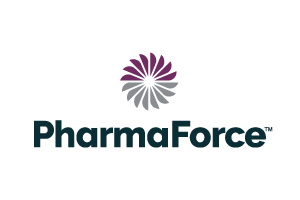SPONSORED CONTENT
AI is everywhere—chatbots, smart assistants, predictive tools. But in 340B? The line between what’s useful and what’s just marketing is getting blurrier by the day.
We’ve seen AI do some pretty amazing things—but we’ve also seen it oversold and underdelivered. And now, you’re likely to see even more vendors touting “AI-enabled” 340B services that aren’t much more helpful than traditional tools, just dressed up in buzzwords.
Some of you will be asked to weigh in on these offerings or explore AI’s potential utility for your program. This article will walk you through where AI can actually move the needle—and where it’s just a shiny distraction.
By the end, you’ll be better equipped to cut through the noise and make clear-headed decisions for your program. And if you’re looking for a partner that skips the fluff and gets to work, that’s where we come in.
Fair warning: If you’re expecting another breathless article about how AI is going to revolutionize 340B overnight… this isn’t it.
Demystifying AI (Without the Hype)
Let’s get one thing straight: AI is a tool, not a miracle.
Think of recent AI innovation—particularly Large Language Models (LLMs)—as a super-smart assistant. One that can take messy, unstructured inputs (like natural language or loosely formatted data), and return answers, next steps, or automated actions.
But it’s still an assistant. It needs good data, clear instructions, and human oversight. It’s not replacing your team—and it can’t solve problems you haven’t already structured.
Here’s a simple metaphor: AI in 340B is like a GPS.
It can read the map (your claims data), suggest routes (decisions), and warn you about potholes (compliance risks). But it’s not going to drive the car. That’s still on you.
Where AI Can Actually Help Your 340B Program
- Knowledge Retrieval via Chatbots: AI-powered chatbots can provide immediate, helpful answers pulled from your program documentation, past decisions, and logic files. In a 340B context, this could mean asking: “Why was this claim marked ineligible?”…and receiving an intelligent,explainable answer. This isn’t science fiction—NLP (natural language processing) is mature tech already being used in customer support and internal ops.
- Intelligent Ticket Routing: AI can help triage support tickets, categorize issues, and even recommend fixes for routine problems. That means fewer back-and-forth emails and shorter resolution times, especially for high-volume covered entities.
- Natural Language Reporting: This application could let users request reports in plain language – like “Show me last month’s 340B savings from our specialty pharmacy for the following medications” – and AI, with the help of LLMs, converts this unstructured human language into a structured query for a data reporting system.
- “What-If” Scenario Simulations: Imagine easily asking questions like, “What would happen if we added this new pharmacy location?” “If I changed my capture logic to this, what might the impact be?” AI will help simulate outcomes, and clearly explain potential impacts on compliance, eligibility, and capture rates/savings – before you commit.
Where AI Simply Doesn’t Fit 340B (And Why It Matters)
AI isn’t perfect. Feed it messy, incomplete, or biased data? You’ll get flawed outcomes. It’s not a fix for broken systems; it’s an amplifier for what’s already there. And it can’t handle the gray areas of 340B compliance that need human judgment – it just gives them better tools. As one of our PharmaForce experts likes to say, “It’s a brilliant intern—super capable, but you wouldn’t let it run the show solo.”
Here’s where we encourage you to take caution and apply extra due diligence:
- Qualifying Claims and Eligibility Checks: Straightforward eligibility and claims management are best handled with clear, rules-based logic—not complex AI models. Vendors that promote “AI-enabled” services that identify “questionable claims” and “lost savings” are often using the same business logic and eligibility criteria utilized by your TPA, while supplementing it with more EHR data. Basically, it’s a slightly more advanced “double check” that requires a lot of implementation time and often, the juice just isn’t worth the squeeze.
- Predictive Audit Risk Analytics (Without Robust Data): You may see vendors claim that AI can predict HRSA audit risk or optimize 340B savings, but true predictive models require clean, consistent, and very large datasets—which most covered entities lack. Without robust historical data and clear causal links, these models have a high likelihood of disappointing.
- Beware Automation Mislabeled as AI: Technology that automates repetitive tasks like data entry or file transfer is not AI by definition. It’s Robotic Process Automation (RPA) and shouldn’t be conflated with LLM or Generative AI capability. These are simple automation workflows that have existed for many years.
How to Spot a Good AI Solution for Your Program
When a vendor comes to you with an “AI-powered” 340B solution, asking the right questions is your best defense against hype as well as your best tool for finding real value. Don’t be afraid to ask questions like these:
- “Can you explain in simple, non-technical terms how your AI model/solution is applied to solve this specific 340B problem?” (Focus on clarity and relevance.)
- “What specific 340B data does your AI use to make decisions? How is that data sourced, secured, and kept compliant with privacy regulations?” (Data is the fuel for AI; understand its source and handling.)
- “How does this AI solution concretely improve upon non-AI methods for this task? Can you quantify the benefits in terms of accuracy, efficiency, savings, or risk reduction?” (Demand specifics and evidence.)
- “What are the known limitations of this AI? In what 340B scenarios or for what types of data would it not be the right tool or might it struggle?” (Reputable vendors will acknowledge limitations.)
- “What level of human oversight, review, or intervention is still required with this AI solution?
- “How are its outputs made explainable and auditable for my team and for potential auditors?” (AI in 340B should be a ‘glass box,’ not a ‘black box,’ especially regarding compliance.)
- “What happens if the AI makes an incorrect prediction or flags something erroneously? How are those instances identified, corrected, and how does the system learn from them?” (Understanding the feedback loop is key.)
- “Is there a risk that my covered entity’s data is exposed to other organizations through shared AI models or chat tools?” (Especially in our industry, data security and privacy cannot be emphasized enough.)
If your vendor can’t answer these questions in a way that increases your confidence, it may be time to walk away.
What We’re Doing at PharmaForce
At PharmaForce, we’re not just talking about AI possibilities. We’re deploying it by actively bringing practical solutions to our customers that are grounded in real-world utility, clear compliance boundaries, and measurable time savings. Here’s a detailed look at what we’ve developed, what’s on the horizon, and what’s currently in R&D:
Available Now:
- Kareem AI Assistant (Contract Pharmacy 2.0)
The first integrated AI assistant in a 340B TPA platform. Kareem quickly helps 340B coordinators and program managers troubleshoot issues, navigate and use our software, and understand workflows. This significantly reduces new staff member or consultant training time, minimizes the change management “tax” of learning a new software for entities switching to PharmaForce from another TPA, and lessens dependence on support staff by enabling self-service.
Coming Soon:
- Real-Time Support Case Analysis
Kareem will soon categorize support tickets, flag common errors, and suggest resolution steps that our customers can take themselves to help troubleshoot any issues. It will also suggest surface recurring issues to our product team to accelerate meaningful improvements.
- Automated Data Extraction from Direct Orders and Referral Notes: Our customers will soon be able to upload PDF orders that weren’t delivered via EDI or faxed referral notes from prescribers. Our AI will automatically integrate these orders and encounters, adjusting available 340B opportunities instantly without manual intervention or support requests.
In Research and Development:
- Conversational Reporting: Our customers will be able to request custom reports through Kareem using simple, natural language – such as, “What were my 340B savings from claims replenished by our specialty pharmacy last week?” Kareem will interpret these requests, query data accurately, and deliver immediate answers and downloadable Excel reports without needing custom report setups.
- Automated Configuration Optimizer: Kareem will analyze configuration change requests related to encounter lookback windows, prescriber eligibility, or NDC order/capture blocking. It will predict how these changes affect your available 340B inventory balance, provide clear insights, and automatically apply approved adjustments seamlessly.
Wrapping Up: Keep It Real with AI
AI can be a game-changer for 340B programs, but only when applied deliberately and with clarity. Lean on it for data crunching, knowledge retrieval and decision support with human-in-the-loop review, and you’ll see real wins. Just don’t expect it to wave a wand and fix everything—it needs your data, your oversight, and your goals to succeed.
As you wade through the hype, stay sharp. Ask tough questions, demand results, and remember the age-old adage: If it seems too good to be true, it probably is.

Hassan Bazzi is Principal AI Product Manager at PharmaForce. He can be reached at hbazzi@thepharmaforce.com
*Please note that this webinar is limited to 340B covered entities and 340B provider consultants.




